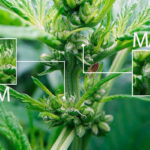Riders frequently utilize the same tire for all situations after selecting what they believe to be the ideal tire. If you’re riding on the same terrain all the time, this could be a good idea. When you start riding in different circumstances, though, you’ll need different treads.
The best approach to figuring out the best mountain bike tires that work best for your riding or racing circumstances is to try out a variety of tires. If you have the opportunity, ride a piece of trail on one tire and then switch tires and ride the same area again. Try a different front tire than the back; that could be the best option.
Muddy Conditions
Muddy situations, in general, necessitate tread with tiny lugs spread far apart. The wide spacing allows mud to flow freely across the tread without accumulating, while yet providing grip. (The knobs on the tires are referred to as lugs by people unfamiliar with the lingo.) High-speed riding is best done in hard-pack conditions when the soil is somewhat damp or sticky.
A semi-slick tire is best in these situations. These tires contain small lugs on the outside and little or no tread in the middle, allowing for lower rolling resistance and thus faster speed.
Although a semi-slick tire is ideal for the rear, you may wish to place a beefier tire on the front. Because the front tire is the control tire, it should have higher traction. The racecourse, for example, may include hard-packed hills that require fewer prominent lugs for excellent grip.
Riders’ braking may have caused the downhill portion to become loose and dirty. On the front, a semi-slick tire will most likely wash out or slide out. Washing out on the front tire has a higher chance of throwing you off your best mountain bikes under $1000 than washing out on the back. Learn more about best mountain bikes under $1000 on this official website.
Loose-Dirt or Dusty Conditions
In loose-dirt or dusty circumstances, both the front and rear tires must have a strong grip, which means they must be taller and have a larger number of lugs. Reduced air pressure can also aid with traction. (Lowering the air pressure flattens the tire, allowing it to make more contact with the ground and reduce the risk of it sliding out.)
Deflating your tires, on the other hand, puts you in danger of a pinch. A pinch flat happens when the tire and tube are squeezed to the point that the tube pinches and doubles upon itself, resulting in a hole in the tube and, as a result, a flat tire. The tubeless tire comes into play at this point: A tubeless tire allows you to ride with less air, giving you a better grip without the risk of a flat tire.
Terrain
The terrain with damp roots is the most difficult to bike on. Short lugs with minimal space between them are the ideal tires to use in this circumstance. You can reduce the air pressure to improve contact with the terrain. Don’t pull out too much air by pinching flat on the roots.
As a result, tubeless tires are always a viable option. It’s better to turn up the volume in tough situations, such as an unending field of pebbles varying in size from a fist to a baby’s head.
Again, the optimum tire is one with small lugs separated by a modest amount of space. If you want to avoid a pinch flat upon hitting the rocks, you’ll need greater air pressure. The tubeless tire will also be useful in this case, since being able to lower the air pressure will result in a smoother ride.
Sand
Sand is similar to loose soil when it comes to riding. It necessitates lugs with a higher profile and less space between them. You may have ridden on tires with paddle-shaped lugs that run the length of the tire. This arrangement allows you to paddle across the sand as if you were on the water in a paddleboat. Low pressure is ideal once again.
Again, experiment with different tires to get a sense of what works best in certain situations.













